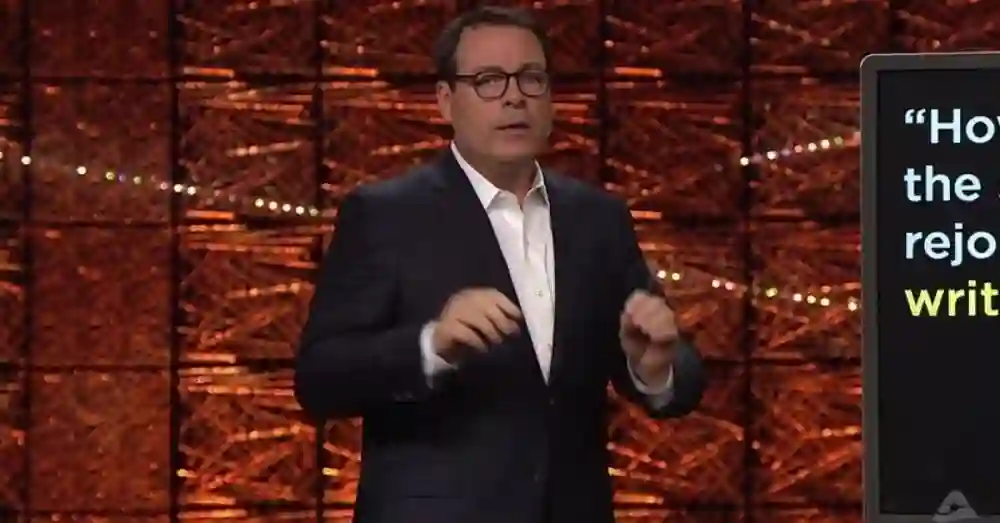
How the Media Covered the Pastor Chris Hodges Scandal: A Critical Review
Introduction
In recent years, the world of organized religion has faced scrutiny as scandals involving prominent figures have come to light. One such figure is Pastor Chris Hodges, the founding pastor of Church of the Highlands in Alabama, whose reputation was marred by allegations that brought significant media attention. The way the media covered the Chris Hodges scandal raises important questions about ethics, sensationalism, and the responsibilities of journalists when reporting on issues involving faith leaders. This article offers a critical review of how the media approached the Hodges scandal, examining the impact of coverage on public perception and the broader implications for faith communities.
The Scandal Unfolds
The scandal surrounding Pastor Chris Hodges erupted in late 2023 when allegations surfaced involving inappropriate conduct and financial impropriety within the church. These claims sent shockwaves through the community, leading to an immediate response from both the church leadership and the media. As a prominent pastor with a large following, Hodges’ situation attracted the attention of national and local news outlets alike.
Initial reports focused on the nature of the allegations, highlighting the serious implications for Hodges and the Church of the Highlands. The media’s choice to prioritize these allegations over the pastor’s previous contributions and positive community impact created a sensational narrative that captivated readers. While it is essential for the media to report on misconduct, the framing of the story can significantly influence public perception.
Sensationalism vs. Responsibility
One of the key issues in the media coverage of the Hodges scandal was the balance between sensationalism and responsible journalism. Many outlets were quick to publish breaking news without fully verifying the claims or considering the potential consequences for those involved. Headlines often leaned toward sensational language designed to attract clicks and views, rather than providing a comprehensive analysis of the situation.
For instance, some articles used phrases like “scandal rocks church” or “pastor under fire,” which implied a level of drama that may not have accurately reflected the complexity of the situation. This approach can lead to the spread of misinformation and create a polarized environment where public opinion is swayed by emotion rather than facts. Responsible journalism requires a commitment to accuracy and nuance, especially when dealing with sensitive subjects such as faith and community leadership.
The Role of Social Media
Social media played a significant role in shaping the narrative around the Hodges scandal. As news broke, platforms like Twitter and Facebook became hotspots for discussions, opinions, and even misinformation. Many users took to these platforms to express their outrage or support, often based on limited information. This phenomenon underscores the challenges faced by traditional media in an age where news spreads rapidly and is often unfiltered.
The viral nature of social media can exacerbate the sensationalism seen in traditional media coverage. In the case of the Hodges scandal, posts and tweets frequently amplified the allegations without proper context or verification. This environment not only fueled public outrage but also complicated the church’s efforts to respond to the situation effectively.
Community Reactions and Impact
The media’s portrayal of the Hodges scandal had a profound impact on the Church of the Highlands and its community. Many congregants felt caught in a whirlwind of negativity that overshadowed the church’s positive contributions to the community over the years. This backlash illustrated how media coverage can affect not just the individual at the center of a scandal but also the larger community connected to that person.
In some instances, congregants expressed their frustration with the media for focusing on the allegations rather than the church’s outreach programs, charitable work, and other initiatives that had positively impacted many lives. This raises questions about the responsibility of the media to provide a balanced perspective that acknowledges both the flaws and the strengths of faith leaders and their institutions.
A Call for Ethical Journalism
The coverage of the Chris Hodges scandal serves as a critical reminder of the importance of ethical journalism. When reporting on sensitive issues involving faith leaders, journalists must prioritize accuracy and context. This includes thorough fact-checking, providing balanced viewpoints, and considering the potential repercussions of sensational headlines.
Moreover, media outlets should strive to uphold the principles of fairness and objectivity, recognizing that their reporting can influence public perception and sentiment. As seen in the Hodges case, sensationalism can lead to division and mistrust within communities, further complicating the recovery and healing processes for those involved.
Conclusion
The media coverage of the Pastor Chris Hodges scandal illustrates the delicate balance between informing the public and fostering a narrative that may lack nuance. As scandals involving faith leaders continue to emerge, it is crucial for journalists to approach these stories with care, recognizing their potential impact on individuals and communities.
Moving forward, the media must commit to ethical practices that prioritize truth, context, and responsibility. By doing so, they can contribute to a more informed public discourse that respects the complexity of human experience—especially in matters of faith and leadership. As the world of organized religion navigates these challenging waters, the lessons learned from the Hodges scandal will resonate for years to come, reminding us all of the power of media in shaping narratives and influencing perceptions.
